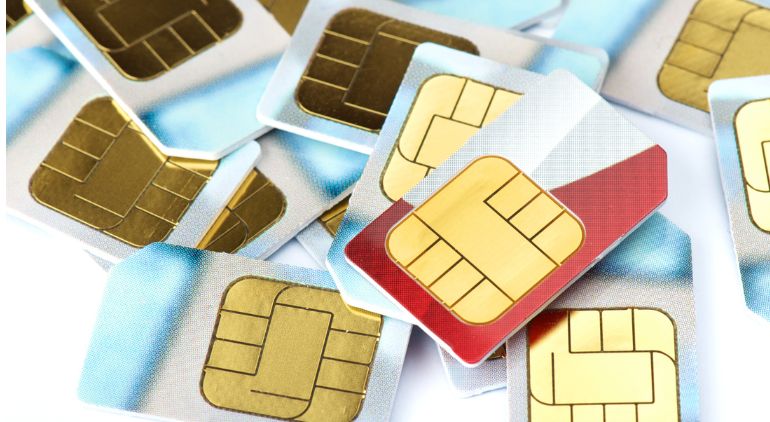405-458-5710
Confidentiality Guaranteed
405-458-5710
Confidentiality Guaranteed
You are Reading:
-
1 to 1 Risk Control & Investigations > Blog > Mobile Device Security > Protect Yourself from SIM Swapping Attacks

Apr
Protect Yourself from SIM Swapping Attacks
Understanding the Threat and Implementing Effective Security Measures
What is a SIM Swapping Attack?
SIM swapping, also known as SIM hijacking, is a type of identity theft where a malicious actor tricks your mobile carrier into transferring your phone number to a SIM card they control. Once they have access to your phone number, they can intercept two-factor authentication (2FA) codes, reset passwords, and gain access to your personal and financial accounts.
How Do SIM Swapping Attacks Work?
In a typical SIM swapping attack, the attacker gathers information about their target through phishing, social engineering, or purchasing data from the dark web. Armed with this information, they contact the target’s mobile carrier and impersonate the target, claiming to have lost their SIM card. They convince the carrier to activate a new SIM card in the attacker’s possession, effectively transferring the target’s phone number to the attacker’s device.
Once the transfer is complete, the attacker can receive calls and texts intended for the target, including 2FA codes. This allows them to bypass security measures and gain access to sensitive accounts such as email, banking, and social media.
Risks Associated with SIM Swapping
SIM swapping poses significant risks, including:
- Financial Loss: Attackers can gain access to bank accounts, initiate unauthorized transactions, and steal funds.
- Identity Theft: With control over your phone number, attackers can impersonate you and access your personal information.
- Data Breaches: Attackers can reset passwords and gain access to sensitive data stored in email, cloud storage, and other accounts.
- Reputational Damage: Unauthorized access to social media accounts can lead to the dissemination of false information, damaging your reputation.
How to Protect Yourself from SIM Swapping Attacks
To safeguard against SIM swapping attacks, consider implementing the following security measures:
- Enable SIM Card Lock: Set a PIN for your SIM card to prevent unauthorized changes.
- Use Strong Authentication Methods: Opt for authentication apps or hardware tokens instead of SMS-based 2FA.
- Secure Personal Information: Be cautious about sharing personal information online and monitor your accounts for suspicious activity.
- Contact Your Mobile Carrier: Request additional security measures, such as a PIN or password, to verify identity before making changes to your account.
- Monitor Your Mobile Account: Regularly check your mobile account for unauthorized changes or activity.
- Stay Informed: Keep up-to-date with the latest security practices and be aware of common social engineering tactics.
Steps to Take if You Become a Victim of SIM Swapping
If you suspect you are a victim of a SIM swapping attack, act quickly to minimize damage:
- Contact Your Mobile Carrier: Immediately notify your carrier and request to reverse the SIM swap. Ask them to add additional security measures to your account.
- Change Your Passwords: Update the passwords for all your online accounts, prioritizing email, banking, and social media.
- Enable Two-Factor Authentication: Use authentication apps or hardware tokens for 2FA, and update the authentication methods for your accounts.
- Monitor Financial Accounts: Keep a close eye on your bank and credit card statements for any unauthorized transactions. Report any suspicious activity to your bank immediately.
- Report the Incident: File a report with your local law enforcement and the Federal Trade Commission (FTC) if you are in the United States.
- Inform Your Contacts: Let your contacts know about the incident so they can be wary of any suspicious communications from your accounts.
SIM swapping attacks are a growing threat in the digital age. By understanding how these attacks work and implementing robust security measures, you can protect yourself from becoming a victim. Stay vigilant, secure your personal information, and use strong authentication methods to safeguard your accounts. If you do fall victim to a SIM swapping attack, act quickly to mitigate the damage and secure your accounts.
- AI
- Bug Sweeps
- Car Security
- Cyber Crime
- Cyber-Stalking
- Digital Forensics
- Fraud
- Geo-Political
- GPS Tracking
- Hidden Cameras
- Identity Theft
- Investigations
- Misinformation
- Mobile Device Forensics
- Mobile Device Security
- Operational Security
- Privacy
- Psychology
- Situational Awareness
- Social Media Investigations
- Stalking
- Surveillance
- Uncategorized
